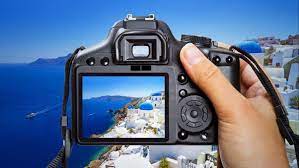
Artworks collection and trading business in Nigeria is a thriving industry that has continued to evolve over the years. The Nigerian art scene is home to some of the most talented artists in Africa and has produced some of the world's most renowned artworks. The art industry in Nigeria is also a significant contributor to the country's economy, providing job opportunities for artists, art dealers, and collectors alike.
Art has always been a vital aspect of Nigerian culture. Nigeria is a diverse country with over two hundred and fifty (250) ethnic groups, each with its own unique cultural practices, including art. Art in Nigeria has evolved from the traditional forms of tribal art to contemporary art. The earliest form of art in Nigeria can be traced back to the Nok culture, which flourished in Northern Nigeria between 500 BCE and 200 CE. The Nok people were skilled in making terracotta sculptures that depicted human figures and animals.
The Igbo-Ukwu culture in Southeastern Nigeria is another early example of Nigerian art. The Igbo-Ukwu people were known for their bronze and brass artworks, which were created using a lost-wax casting technique. The bronze and brass artworks were intricate and often depicted human figures, animals, and mythical creatures.
The Benin Kingdom, which existed from the 14th century to the 19th century, was also known for its impressive art. The Benin people created bronze sculptures and ivory carvings that were highly prized and traded with other kingdoms and empires.
During the colonial era, Nigerian art experienced a decline due to the influence of European art. However, in the 1960s, Nigerian art experienced a revival as artists began to incorporate traditional elements into their artwork. Today, Nigerian art is highly respected and recognized globally, with many Nigerian artists showcasing their works in international exhibitions.
The Nigerian art market is one of the fastest-growing in Africa. According to a report by ArtTactic, a leading art market research firm, the Nigerian art market grew by forty-seven point five percent (47.5%) between 2016 and 2018, making it the fourth fastest-growing art market in the world. The report also revealed that the value of the Nigerian art market increased from two hundred thousand dollars ($ 200,000) in 2008 to one million, four hundred thousand ($ 1,400,000) in 2016.
The Nigerian art market is diverse, with artworks ranging from traditional tribal art to contemporary art. The art market in Nigeria is also driven by a growing middle class, who are becoming increasingly interested in art and culture. This has led to an increase in demand for art, which has in turn, led to an increase in prices.
The Nigerian art market is also supported by various art galleries, art fairs, and auctions. Lagos, the commercial capital of Nigeria, is the hub of the art industry in Nigeria, with many art galleries and fairs located in the city. The Lagos Art Auction, which is held annually, is one of the most significant art events in Nigeria, attracting both local and international buyers.
Artworks are highly sought after and valued all over the world. They are a representation of a culture, history, and a people's way of life. In Nigeria, the art industry is vibrant and has produced some of the most celebrated artists globally. The country is home to various forms of artwork, including sculptures, paintings, and textiles, among others.
However, despite its rich history and vast array of artists, the art industry in Nigeria remains largely untapped. The art trade business in Nigeria has enormous potential and offers a great opportunity for entrepreneurs to invest and make a profit.
This article aims to provide a comprehensive guide on how to start an art trading business in Nigeria.
Step 1: Conduct Market Research
Market research is the first and most crucial step in starting an art trading business. It involves gathering data and analyzing the art industry's market size, competition, and trends. This information will help you identify the right products to trade, pricing strategy, and the right target market.
To start, you can conduct online research and attend art exhibitions and events to learn about the art industry. You can also visit art galleries and museums to familiarize yourself with the different forms of art and identify the most popular and valuable art pieces.
Step 2: Develop a Business Plan
After conducting market research, the next step is to develop a business plan. A business plan outlines the business's goals, objectives, and strategies for achieving them. It also includes a marketing plan, financial projections, and an operational plan.
The business plan should outline the art trading business's structure, including whether it will operate as a sole proprietorship, partnership, or limited liability company (LLC). An LLC is recommended as it offers legal protection for the business owners and ensures personal assets are not at risk in case of a lawsuit.
The financial projections should cover startup costs, expected revenue, and operating expenses. It should also include a contingency plan for unexpected expenses and a break-even analysis to determine when the business is likely to start making a profit.
Step 3: Register the Business
The next step is to register the art trading business with the Corporate Affairs Commission (CAC) in Nigeria. The CAC is responsible for registering businesses in Nigeria and issuing certificates of incorporation. The registration process involves completing the necessary forms, paying the required fees, and providing the required documents.
The documents required for registration include the business plan, proof of identity, and address of the business owners, and a memorandum of association and articles of association, if applicable. After registration, the CAC will issue a certificate of incorporation, which is proof that the business is registered and authorized to operate in Nigeria.
Step 4: Secure Funding
Securing funding is an essential step in starting an art trading business. The business may require significant capital investment to purchase the art pieces, rent a store, and hire employees. The business owner can secure funding from various sources, including personal savings, loans from friends and family, or bank loans.
When applying for bank loans, the business owner should provide a detailed business plan and financial projections to demonstrate the business's viability and potential for growth. The business owner can also consider applying for grants from government agencies or non-governmental organizations that support the arts.
Step 5: Identify and Partner with Artists
The next step is to identify and partner with artists whose works you will trade. Partnering with artists is crucial as it ensures a steady supply of high-quality artwork. The business owner can attend art exhibitions and events to identify talented artists or contact art associations and guilds for recommendations.
When approaching artists, the business owner should provide a detailed proposal that outlines the terms of the partnership, including the commission structure, expected sales volume, and payment terms. It is essential to establish a good relationship with the artists to ensure a long and mutually beneficial relationship.
Step 6: Build Your Inventory
The success of your art works trading business will depend on the quality and variety of the artwork you have available for sale. To build your inventory, you can attend art exhibitions, visit galleries, and network with artists to find pieces to add to your collection.
When building your inventory, it's important to consider the quality of the artwork, the artist's reputation, and the demand for that particular type of art. You should also consider the price of the artwork and how much you can sell it for to ensure a reasonable profit margin.
Step 7: Establish Your Pricing Strategy
Pricing is an important aspect of any business, and it's especially important in the art works trading industry. The price of art can vary greatly depending on factors such as the artist's reputation, the quality of the artwork, and the demand for that particular piece.
To establish your pricing strategy, research the prices of similar artworks in your niche and consider the cost of acquiring the artwork, marketing and promotion, and overhead costs such as rent, utilities, and staff salaries. You should also factor in a profit margin to ensure your business is profitable.
Step 8: Develop Your Marketing Strategy
Marketing is essential for any business, and it's especially important in the art works trading industry. To promote your business and attract customers, you will need to develop a marketing strategy that includes advertising, social media, and other promotional efforts.
When developing your marketing strategy, consider your target audience and how you can reach them effectively. You should also consider the competition in your niche.
Consider using social media platforms such as Etsy, Instagram, Facebook, and Twitter to showcase your art inventory and connect with potential customers. You can also consider attending art fairs, exhibitions, and events to showcase your art pieces and network with potential buyers.
Step 9: Establish a Sales Channel
Establishing a sales channel is critical to your art trading business. You should determine the best sales channels for your business, including galleries, auctions, and online platforms. You should also consider developing partnerships with other businesses in the art industry, such as interior designers or event planners.
Consider using online platforms such as Artsy, Saatchi Art, and Artnet to showcase and sell your art pieces. These platforms can help you reach a broader audience and expand your customer base.
Step 10: Build Relationships with Customers
Building relationships with your customers is crucial to the success of your art trading business. Consider hosting events, such as exhibitions or art talks, to showcase your art pieces and engage with potential customers.
The Nigerian art market presents many opportunities for collectors and traders. With a growing middle class and increasing demand for art, there is a significant potential for growth in the Nigerian art market. The Nigerian art market is also relatively untapped, presenting opportunities for investors and traders to capitalize on this growing industry.
One of the primary ways to invest in the Nigerian art market is to collect and resell artworks. Starting and running a artwork trading business in Nigeria is a very profitable business that would generate a lot of profits for the investor.






















